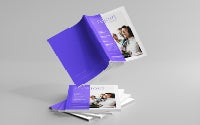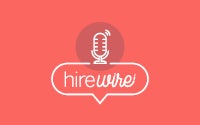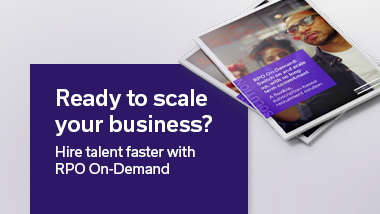6 ways to make your job ads more gender balanced
The global talent shortage is the biggest issue facing HR teams right now, as businesses struggle to source enough qualified candidates to maintain their current growth. In 2021, 69% of companies reported talent shortages and hiring difficulties. Exploring ways to widen talent pools can help companies tackle the talent shortage, but many are falling at the first hurdle: the recruitment process. The insidious effects of hidden bias and discrimination can potentially leave holes in every stage of the recruitment process, leading to continued talent leakage and ever-widening skills gaps.
Furthermore, the Covid-19 pandemic has had a devastating effect on gender parity, sparking a recession that has led to more job losses among women than men. This phenomenon – dubbed the “shecession” – can be partially attributed to the strong number of women working in industries that were most affected by lockdowns and social distancing measures put in place during the pandemic (e.g., the education and hospitality sectors), as well those most likely to be overwhelmed by such a crisis (e.g., those in the healthcare and social work sectors). These challenges have been compounded by the sudden loss of childcare and the burdens of home-schooling and parental care, which are typically inherited by women. According to the World Economic Forum’s Global Gender Gap Report 2021, at our current trajectory, it will now take 135.6 years to close the gender gap worldwide.
Companies must act now in order to support women to enter and flourish in the workforce. Creating a more accommodating and inclusive recruitment process starts with your job ads – which should function as a compelling invitation to work for your organisation. Yet hiring teams often publish adverts with language that can be subtly uninviting, particularly for women and minority groups. To correct and optimise this aspect of your recruitment process, it’s vital to recognise the impact that language can have, and how the words you choose to include in a job ad can determine the kind of candidate who will ultimately apply for the role at hand. Research conducted by Openreach found that women are 50% less likely to consider roles that have a coded gender bias in the job ad.
The business case for Diversity & Inclusion is also robust. Research has found that companies in the top quartile for racial and ethnic diversity are 35% more likely to have financial returns above their industry average, while another study suggests that a higher representation of women in C-suite level positions can yield 34% greater returns to shareholders. Job adverts are one of the most important candidate touchpoints, and in order to attract a wider, more diverse talent pool, companies should be designing theirs with inclusivity in mind. Here are six ways to make the opportunities at your organisation more accessible to a wider range of talent.
Watch your language
Job adverts with masculine wording can make women less likely to believe they belong in that role. Masculine pronouns (he/him/his) and male-orientated terms such as “power player”, “guru” or “rockstar” can discourage female applicants and are best avoided in favour of neutral job titles such as “sales lead”, “engineer” and “marketer”.
According to research by the BBC, words such as ‘competitive’, ‘leader’ and ‘dominate’ are often interpreted as male-coded, while words such as ‘support’, ‘community’ and ‘interpersonal’ are more female-coded. Interestingly, a recent UK study TotalJobs found that women are less likely to apply for roles that feature ‘competitive’, ‘ambitious’, or ‘dominant’ in their job ads – yet men are rarely dissuaded by words that women find more appealing, such as ‘support’, ‘care’ and ‘commit’. Of all the job ads reviewed as part of the study, only one fifth of them were categorised as ‘gender neutral’.
Check your readability
Job ads are often written at a language level that is too advanced for the average reader. According to research by nthuse, the average reading age of a UK job ad is 19.3. However, 14% of the job ads analysed as part of the study were harder to understand than Charles Darwin’s “Origin of Species”.
There are many tools on the market that help your adverts more accessible. Platforms like Resource Solutions’ RS Adify tool can test the readability, spelling and grammar of your text and suggest improvements for greater engagement. In addition to readability, RS Adify seeks out gender bias, complexity of language, sentiment and tone in job ads, and automatically improves readability and eliminates bias.
Promote your EVP
Attract a more diverse talent pool by highlighting the aspects of your Employee Value Proposition (EVP) most likely to appeal to women and minorities, including specific policies and benefits. For example, according to a study by Harvard Business Review, 25% of women would give parental leave heavy consideration when choosing a job, so communicating your organisation’s parental leave policy clearly may make your advert more appealing to this audience.
Go beyond the job description
A job advert doesn’t have to go in-depth – you can save that for your job description. Research from LinkedIn indicates that women are generally more selective when applying for roles, so focus on piquing interest using everyday language and an approachable tone of voice. Share insights into the roles purpose, and team and company culture. Avoid writing acronyms and long sentences, or discussing deliverables and KPIs, and instead outline what’s exciting about the opportunity at hand.
Don’t over-optimise
Search engine optimisation (SEO) has had a substantial impact on the way job adverts are written. Hiring teams understandably want their job listing to rank highly in search results, but if an advert prioritises keyword density above a human touch, it’s not going to resonate with a diverse audience. A mix of keywords will capture a candidate’s attention – but a sense of personality will hold it, so use a mix of both to attract diverse talent.
Maximise reach with mobile
89% of job seekers have reported a preference for using their mobile phone to search for job opportunities – and they do this on the go. Optimising your job adverts for mobile is a key way to reach a larger, diverse group of candidates. Many of these sites enable search functions for part-time, flexible or remote work, and therefore resonate with female talent. Ensure your text is “scroll-friendly” – quick to read and understand – and don’t forget to link to your career site and social media.
Download our whitepaper, Break the Bias: Achieving gender equality in the workplace, for further insights into gender equality and how hidden bias within your recruitment process could be alienating diverse talent. In addition, you’ll discover actionable tips for fostering a more inclusive company culture.













